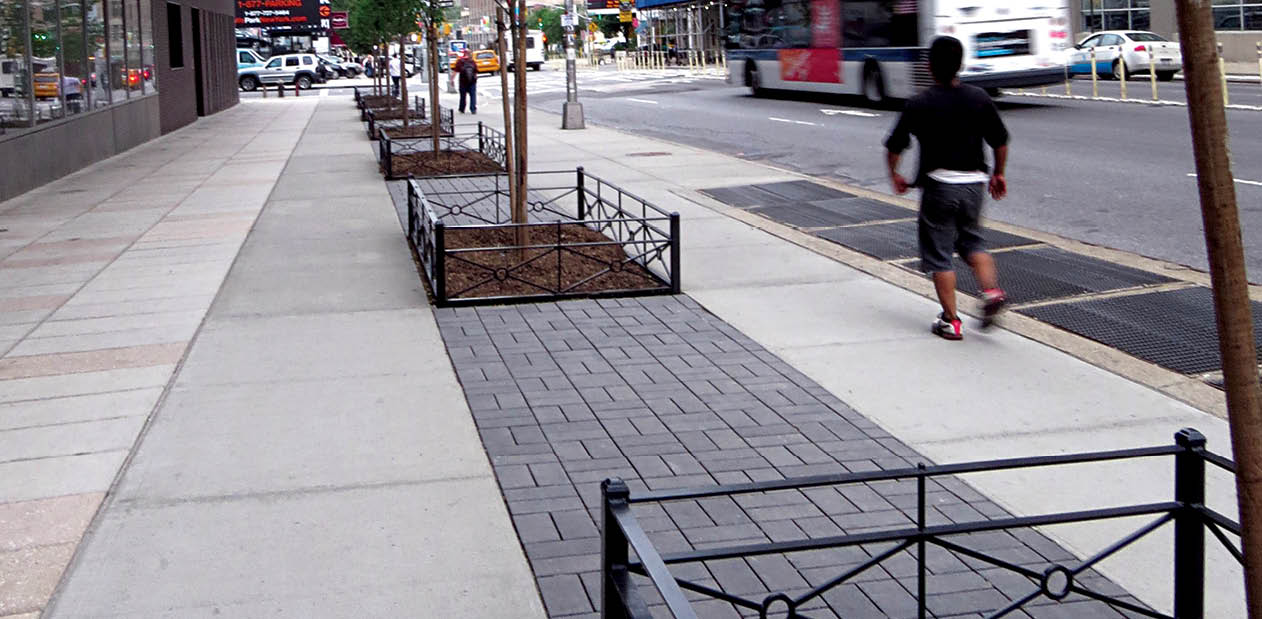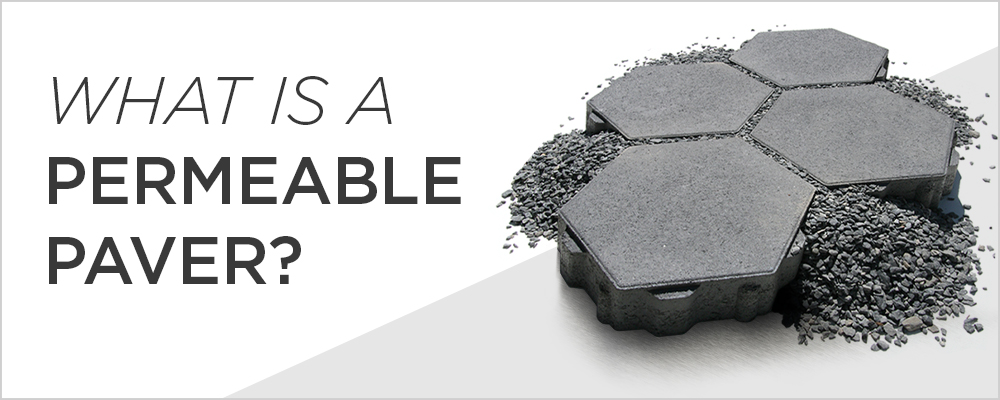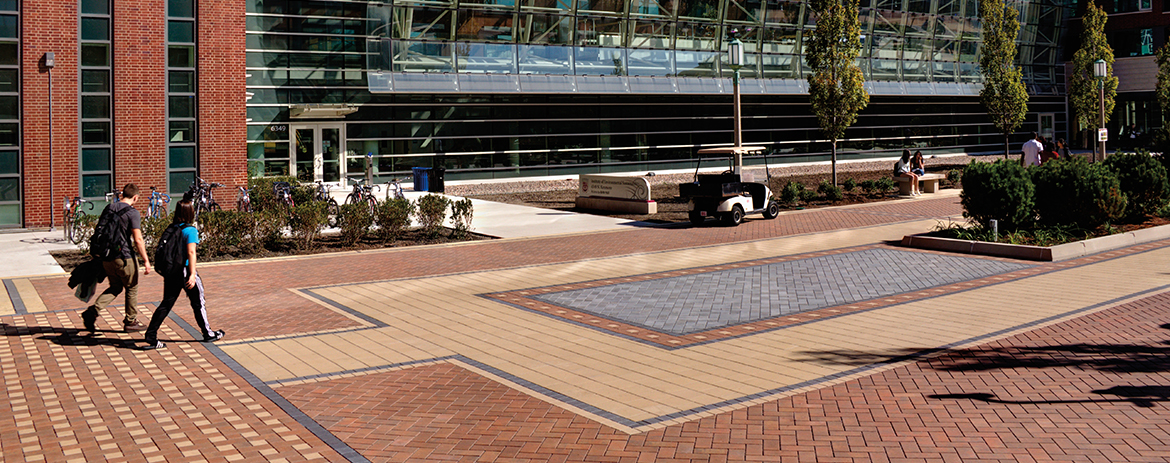Traditional surface detention ponds, which serve as storage facilities for excess rainfall, are often regarded as inefficient in their use of space. Stormwater runoff from impervious surfaces like roofs, roads, and parking lots is directed through a network of pipes, before releasing into detention, or retention ponds. While this mitigates the overflow of rainwater in that particular space, this does come with certain drawbacks. One issue is that stormwater overflow can carry pollutants back into the ponds, posing a risk to the surrounding environment. Additionally, these ponds may become breeding grounds for mosquitoes and other invasive insects attracted to shallow, dry bodies of water. This can be particularly bothersome when ponds are located near residential neighborhoods.
A much more effective approach to managing rainwater volume already exists, and that is designing outdoor spaces using permeable pavers. A permeable paving base for stormwater detention is a very efficient use of land, as the pervious surface allows for a detention area to be contained underneath. The detention is created under every square foot of permeable paving, as deep as necessary.
Permeable paver systems use crushed, angular, open-graded aggregate base materials. These materials are entirely different from those used for traditional impervious roads and parking lots. Those traditional systems use dense-graded aggregates containing fines, making them extremely slow-draining. Conversely, the use of open-graded aggregates provides a void space or porosity of approximately 40 per cent. This facilitates the detention of water and also allows for rapid infiltration into the subbase.
Calculating the Stormwater Volume Capacity of a Permeable Paving System
The depth of an open-aggregate base of a permeable paving system defines the volume of stormwater that can be captured. Calculated using local rainfall averages, a base that is too shallow can generate runoff and requires increased volume. A base that is too deep, while able to support excess rainfall amounts, can impact the overall cost of the system – requiring additional excavation and aggregates. Preliminary design calculations for captured rainwater harvest amounts and base capacity allow designers to determine the appropriate course of action for the design of their systems. These calculations help to maximize the efficiency of the stormwater management system and ensure that it can effectively handle specified year rainfall events, temporarily holding captured stormwater until it infiltrates into the ground, minimizing the risk of overflow and environmental pollution.
Permeable Paving Systems in Action
Explore two projects that have implemented permeable paving systems to detain stormwater in urban areas.
Hudson Sponge Connection Streetscape Remake

A desire for urban beautification in Manhattan led to the largest district-wide use of state-of-the-art sustainable street features in the city. Among the tools, Unilock Eco-Priora™ permeable pavers allow rainwater to flow into the specifically designed tree trenches that feed nearby vegetation. As well, permeable paving helps capture stormwater, a benefit that became top-of-mind following the extensive flooding caused by Hurricane Sandy in 2012.
Hoboken Southwest Park

As part of an extensive resiliency plan to mitigate flooding in a Hoboken neighborhood, a one-acre parking lot was turned into a one-of-a-kind park. Hoboken Southwest Park’s green space offers a refined spot for a variety of recreational activities with moveable seating areas, a lawn, child-friendly play zones, and much more. Permeable pavers helped the park successfully meet the city’s demand for sustainability with integrated green infrastructure, capable of managing 200,000 gallons of stormwater in its underground water detention system.
Unilock Eco-Promenade™ is designed to direct rainwater back into the subbase and detention system through the joint material and keep it away from sewer systems. The paving pattern was achieved using the special-order Series™ finish in three colors, which play on the building hues of the neighborhood in order to create an interesting and vibrant space for all to enjoy.
Unilock permeable pavers present a highly effective solution for controlling and managing stormwater overflow. To learn more about our vast selection of permeable paving products, connect with a local Unilock representative.




